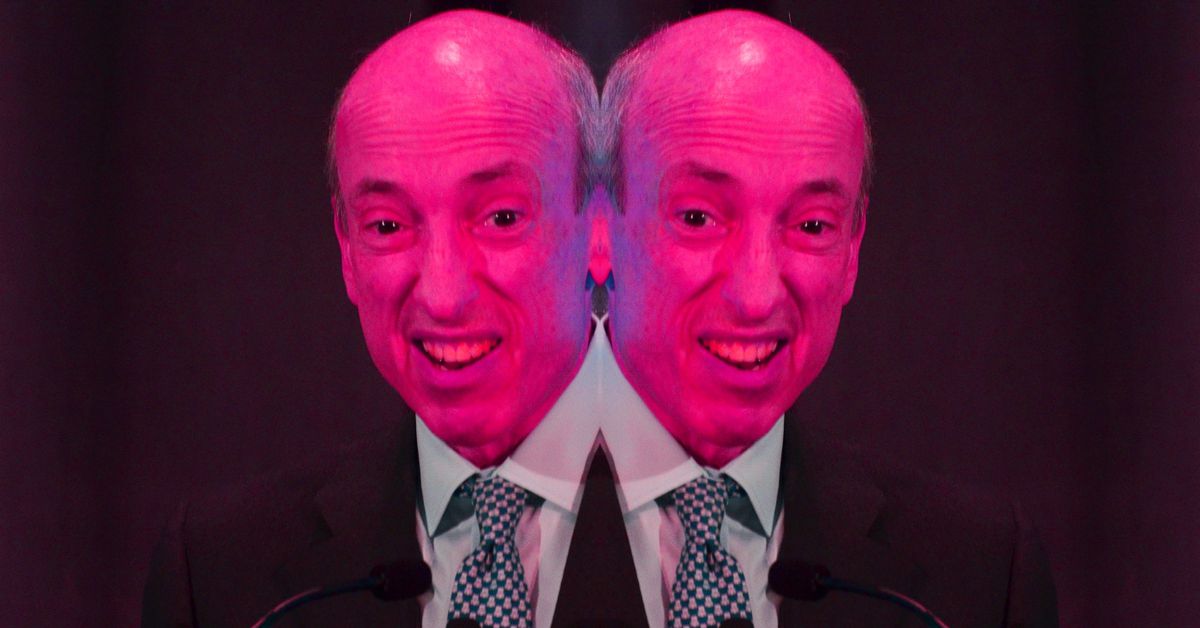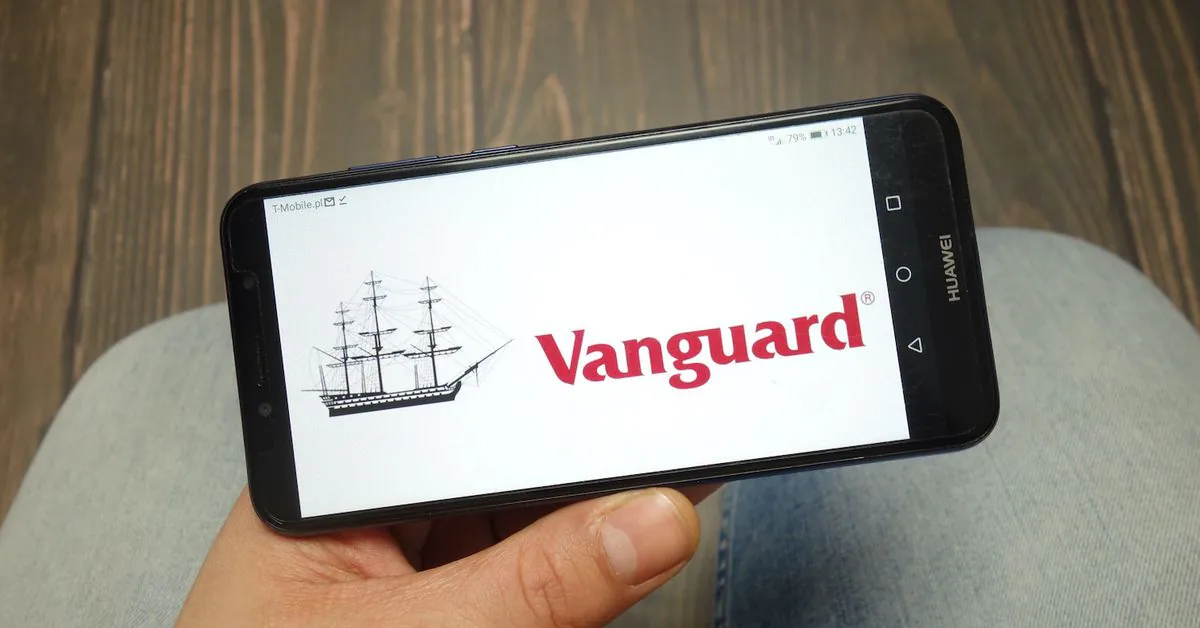Rollup Money Tree Exploring Sorter’s Benefit Distribution and Decentralized Solutions
Rollup Money Tree An Exploration of Sorter Benefits Distribution and Decentralized SolutionsAuthor: YBB Capital Researcher Ac_Core
Introduction
The sorter (Sequencer) is an important component in the Ethereum scaling solution Rollup. It is used to sort transactions and perform related operations such as block creation, transaction acceptance, transaction sorting, transaction execution, and transaction data submission. With the increase in the number of Layer2 networks and the prosperity of their ecosystems, the profit distribution and centralization issues of Layer2 itself have gradually attracted attention. For example, in the important sorter component of Rollup, can it achieve decentralization and how is the sorter profit distributed. This article is for analysis and reference only, not for project promotion.
A Brief Introduction to Rollup Economics
Roles in Rollup:
According to the explanation of @barnabemonnot, a research scientist at the Ethereum Foundation, we can divide the roles in the Rollup system into three main roles: users, Rollup operators, and the base layer. The main process they run is roughly as follows: when users conduct transactions on L2, Rollup operators act as an interface between users and the base layer, and eventually publish data to the base layer, as shown below:
- The ‘Hot Potato’ wave is coming, sparking a meme movement with a potato worth over $3200.
- After traditional games face difficulties in production, Ubisoft continues to invest in Web3.
- The current status of DeFi applications on Bitcoin Cross-chain, Layer 2, new protocols, and native solutions.
- Users: they send their transactions on the Layer2 network, deploy their assets on Rollup for contract interaction on Layer2, and pay fees to Rollup operators;
- Rollup operators: they represent all the infrastructure required to process transactions on the L2 network, including many other roles such as sorters (Sequencers) that publish transaction batches, executors that publish statements, challengers that report fraud proofs, and validators that compute validity proofs, among which, sorters are the most important;
- Base layer: it can also be understood as a full node, and its purpose is to protect the data protocol of Rollup, to process and verify all transactions, ensure the correctness of Rollup state, and ensure the validity of each transaction, such as detecting erroneous transactions and removing them.
Image source: @barnabemonnot
Costs of Rollup:
Layer2 operator costs: They refer to the expenses incurred in maintaining a transaction pool, sequence batch processing, calculating state root/state deltas/validity proofs, and other issues related to batch transaction processing, transaction verification, and block generation. Since Rollup operators are currently centralized, the costs generated are borne by the protocol itself or its partners, and the “transaction compression” process needs to be settled on the base layer.
Layer1 Data Availability Cost: DA is the guarantee of Rollup equivalent to the security of Ethereum. In order to publish data on Ethereum, when the operator aggregates a large number of transaction sets, the operator needs to release the transaction set in the form of “CallData” to the underlying layer. The cost of DA contributed to Ethereum L1 accounts for the majority of the total cost of Rollup. And the data market price at that time is managed by EIP-1559.
Layer2 Congestion Verification Cost: This is a controversial cost factor. When the supply of total block space in Rollup cannot meet the existing market demand, scarce resources must be allocated. It also intuitively reflects the dynamic balance between Gas prices and network traffic.
Rollup Revenue:
Speaking of Rollup revenue, there are two main sources: Transaction Value and Issuance.
Transaction Value
Rollup’s essence is to expand Ethereum, speed up, and reduce Layer1 pressure. Regarding the issue of receiving MEV-related income in Rollup, the answer is actually no. Because Rollup itself relies on sorters and transaction sorting based on the level of Gas expenditure, it does not have the concept of blocks and therefore does not have a Mempool. However, private Mempools like OP Mainnet have brought about MEV issues. Therefore, Rollup itself will not receive MEV profits without the premise of “private Mempool”. In essence, the biggest source of profit for Rollup comes from the price difference between transaction Gas.
Issuance
The second source of income is issuance. In the underlying layer, the block producers of native cryptographic assets on the network receive income in the form of newly minted tokens. This offsets to some extent the infrastructure costs of block producers and once profits are generated, it will attract more block producers. Assuming that Rollup is able to mint its own tokens, Rollup may pay for operating expenses through the issuance of new tokens (but in reality, the model here will be more ambiguous, and there are multiple ways to use income sources for Rollup costs).
We will not elaborate on the issues related to cost and revenue balance. The aforementioned is just a brief description. The Cancun upgrade will also have an impact on the profitability of Rollup to a certain extent. Its core EIP-4844 (also known as Proto-DankSharding) can be summarized in one sentence as alleviating the high cost of DA in Ethereum Layer1, where a temporary external storage called “blob” appears, which can move the data contents of Layer2 transactions to a new temporary “blob.” However, it does not actually store Layer2 transaction data in Layer1. The advantage is that Layer2 will have lower storage costs and faster speed, but the uncertain impact of the current data black box of Layer2 is still worth exploring.
Briefly Explaining the Working Principle of Rollup:
- Aggregation: Convolution nodes collect multiple transactions and create a compressed summary, known as a convolution block, which includes the basic information required for transaction verification and state updates;
- Verification: Rollup blocks are submitted to the main blockchain and validated by validator nodes to ensure the validity of transactions within the block and that they adhere to predefined rules.
In general, once a block is validated, the state of the Rollup is updated on the chain to reflect the result of the transaction. This allows for a reduction in computational load and data storage requirements on Layer1, significantly improving scalability. An effective approach is to move computation and state storage off-chain, while keeping some data on the chain.
What is a sequencer?
A sequencer is a core component in the design of Rollups. As the name suggests, it is responsible for sorting the received transaction pairs and their corresponding Gas prices, bundling transactions into blocks and extracting fees, thereby improving the orderliness of transactions and the efficiency of the entire system. However, the reality is that currently all Rollups on Ethereum operate in an isolated and centralized manner, managed by their respective Rollup teams. The intuitive impact of this is that Rollup providers maintain their own centralized sequencers to make the entire network cheaper and faster, but this also means that they enjoy the profits of Rollups.
Source: Binance Research
As mentioned earlier, the main profitability of Rollups comes from sorting the income difference of Gas fees paid by users, while the expenses mainly include the data availability cost of Layer2 to Layer1 and the operating expenses of the centralized operators. Therefore, the sequencer mainly charges transaction fees from the user side and pays DA fees to Ethereum, in simple terms:
Sequencer Revenue = User Transaction Gas Price Difference Income – L2 to L1 Data Expenses – Sequencer Operating Expenses
Different sorting schemes in Op Rollups and Zk Rollups
In Op Rollups, a large number of off-chain transactions are bundled together to form larger batches before being published to the base layer. This process helps distribute fixed costs to numerous transactions within each batch, thereby reducing user costs. At the same time, various compression techniques are employed to minimize the data published to the base layer. The difference between the two is that Zk Rollups use cryptography to prove the validity of off-chain transactions, while Op Rollups rely on a mechanism to detect fraudulent activity and identify inaccurately computed transactions.
After submitting a batch Rollup, there is a challenge period during which anyone can question the result of the aggregated transactions by generating fraud proofs. If the fraud proof is successful, the Rollup protocol will re-execute the transactions and adjust the state of the Rollup accordingly. Furthermore, a successful fraud proof will result in a reduction of the sequencer’s stake, as the sequencer includes the incorrectly executed transactions in a block. In this process, if the sequencer includes the fraud proof of the incorrectly executed transaction in the block, it will result in a loss of the sequencer’s interest. After the challenge period ends, if the rolled batch is not yet validated (i.e., all transactions are correctly executed), it will be confirmed as valid and included in the base layer. In terms of the sequencer issue in the implementation process, Op Rollups adopt multiple chains but a single shared sequencer.
ZK Rollups aggregate transactions into batches and process them off-chain, reducing the amount of data that needs to be uploaded to the blockchain. Their sequencer merges the changes required for the entire batch of transactions into a single representation, instead of transmitting each transaction individually. To verify the correctness of the state changes, they generate validity proofs. Therefore, ZK Rollups rely on zero-knowledge validity proofs instead of fraud proofs. The sequencer collects transaction data from L2 and is responsible for submitting (or publishing, depending on the specific architecture) zero-knowledge proofs to L1. If the sequencer behaves maliciously, their stake will be reduced, incentivizing them to publish valid blocks (or batch proofs). The prover (or sequencer, if combined into one role) provides tamper-proof evidence of transaction execution, proving that the new state and execution are correct.
Subsequently, the sequencer submits these proofs along with transaction data or at least state deltas to the validator contract on the Ethereum mainnet. Technically, the roles of the sequencer and prover can be merged. However, splitting these responsibilities prevents unnecessary centralization in complex designs, as both proof generation and transaction sequencing require highly specialized skills.
In many cases, while providing zero-knowledge proofs, the sequencer only submits state changes in L2 to L1, providing this data to the validator smart contract on the Ethereum mainnet in the form of verifiable hashes. Since ZK Rollups only need to provide validity proofs to finalize transactions, funds transferred to or from the underlying layer do not experience any delays. Once the ZK Rollups contract confirms the validity proof, the exit transaction is executed.
Centralization and Decentralization of Sequencers
Currently, sequencers in L2 are centralized, but decentralized sequencers are also important in the future, especially from an ideological perspective. Under the assumption of trust, relying on a single centralized sequencer is not desirable. However, sequencers are not essential. They are just a design choice for Rollups, and there is currently no alternative solution. Therefore, Rollups currently employ centralized sequencing to solve transaction sequencing issues. The actual progress of Rollups is shown in the following L2BEAT official data:
- Centralized Sequencer
Advantages: Greatly improves transaction confirmation speed and reduces transaction costs, providing a user-friendly trading experience.
Disadvantages: The most significant drawback comes from the risks of single point of failure and monopolies. The issue of single point of failure does not need much explanation, as Rollup downtime incidents have become frequent. The risks brought by monopolies are self-evident. Centralized sequencers undoubtedly obtain the power to sequence transactions, thus easily maximizing their own interests. Additionally, this may bring relative weaknesses in terms of resistance to censorship.
- Decentralized Sequencer
Advantages: Whether to use a decentralized sequencer seems to have become an important criterion for measuring the true decentralization of Rollups. The benefits are self-evident: it can significantly increase the degree of decentralization, prevent malicious operators, and ensure the security of users’ assets to a great extent. It can also effectively prevent various downtime phenomena in Rollups.
Disadvantages: The cost of enhancing decentralization and security is a reduction in transaction speed or an increase in transaction costs, thus weakening users’ interactive experience to some extent.
Source: L2BEAT
Different Types of Layer 2
Vitalik mentioned in a recent article “Different types of layer 2s” that the heterogeneity trend of Layer 2 projects will become more evident in the future and will continue. For example, the development of traditional public chains represented by Arbitrum, Optimism, and Scroll, and the recent development of the EVM ecosystem represented by Kakarot and Taiko. The main reasons for this trend are as follows:
- Some projects that are currently independent Layer 1 are seeking to approach the Ethereum ecosystem, and these projects may gradually transition and potentially become Layer 2. But because the technology is not ready yet, everything is currently being placed on a Rollup temporarily;
- Some centralized projects hope to provide more security guarantees for their users and are exploring blockchain-based approaches. In many cases, these projects would explore “Permissioned Consortium chains” in the previous era. In fact, they may only need a mid-level of decentralization. Additionally, these projects often have high throughput, so at least in the short term, they are not suitable for roll-up development;
- Weak finance-related applications such as games or social applications also want to achieve decentralization. For social media, different parts of the application need to be treated differently: rare and high-value activities such as user registration and account recovery should adopt a roll-up approach, while frequent and low-value activities like posting and voting only require lower security. The risk of posts disappearing due to chain failures can be tolerated. However, the risk of account loss due to chain failures is more difficult to bear.
Although currently, applications and users in Ethereum Layer 1 only need to pay relatively small Rollup fees in the short term, the point we want to emphasize in this chapter is whether users can smoothly withdraw assets from Layer 2 to Layer 1, namely the “forced withdrawal” and “escape pod” features of Rollup, as explained in the related extension link by Faust [1].
Image Source: Different types of layer 2s
If you have an asset on Layer1 that needs to be deposited on Layer2 before it can be transferred to another wallet address, how confident can we be that you can retrieve this asset back to Layer1? Let’s clarify this with a simple chart:

Data Source: Different types of layer 2s
It’s worth mentioning that this is a simplified model and there are many intermediate options. For example:
- Between Rollup and Validium: In Validium, anyone can make on-chain payments to pay for transaction fees, and operators are obliged to submit some data on-chain or they risk losing their deposit.
- Between Plasma and Validium: Plasma systems【2】 provide similar security guarantees and off-chain data availability as Rollup, but it only supports a limited number of applications. A system can provide a full EVM and offer Plasma-level guarantees for users who don’t use these more complex applications, and Validium-level guarantees for users who do.
These intermediate options can be seen as a spectrum between Rollup and Validium. But what drives an application to choose a point on the spectrum instead of a more left or right point? There are two main factors:
- The cost of Ethereum’s native data availability, which will gradually decrease as technology improves. Ethereum introduced EIP-4844 in the upcoming Hard Fork Dencun 【3】, providing on-chain data availability of approximately 32 KB per second. In the next few years, with the introduction of full “on-chain data sharding”【4】, this data availability is expected to increase in stages, eventually reaching approximately 1.3 MB per second. Meanwhile, improvements in data compression technology【5】 will allow us to do more with the same amount of data;
- The application’s own requirements: How much loss are users willing to bear in comparison to the high costs of application errors? Financial applications suffer greater losses from application failures, while games and social media involve a large number of activities per user, with relatively lower activity values. Therefore, different security trade-offs make sense for them.
A decentralized sorter can be implemented by the Rollup project itself or with the help of a third party. Implementing a decentralized sorter with the help of a third party can also be referred to as Sequencing-as-a-Service. Projects like Espresso, SUAVE, Astria, Radius, etc. focus on decentralized sorter solutions, each with its own implementation path.
Decentralized Sorter Solution
1) Espresso: Composed of five main components: 1. Shared mechanism based on HotStuff [6], which requires approval from a two-thirds majority to be determined and is irreversible; 2. The DA layer provides two different data retrieval paths. The first path is optimistic and fast, while the second path is more reliable but slower, designed to counter conditions; 3. Rollup REST API: The rollup program seamlessly integrates with the Espresso Sequencer using this API; 4. Sorter contract: The sorter contract is an intelligent contract that validates the HotShot consensus and can act as a lightweight client, managing transaction order checkpoints and supervising the equity table of the HotShot protocol; 5. Network layer: This layer facilitates communication between participating nodes in the DA layer and HotShot consensus. Overall, it looks like the diagram below. When a user’s transaction is sent to Rollup, it undergoes transaction validation using ZK or optimistic schemes.
Image Source: The tech: Sequencers (Espresso Sorting Process Overview)
2) SUAVE is an independent network layer that can share memory pools with other blockchain networks. It cannot directly communicate with smart contracts on Ethereum or other public chains. Instead, it separates the memory pool and block generation part from existing public chains, supporting more Layer1 or Layer2 networks, and becoming a shared sorter for Rollup chains. Therefore, it also has certain advantages in transaction sorting across MEV and different Rollups, but it also brings risks similar to those faced by cross-chain bridges.
3) Astria aims to establish a shared sorter network layer to avoid the disadvantages of centralized sorters. It relies on a Tendermint-based leader rotation mechanism to address the scalability of transaction sorting and the crash risk of centralized single points of failure. At the same time, Astira’s sorter architecture is designed to aggregate transactions from multiple Rollups, rather than generating different state roots for individual blocks. The formed transactions are ordered into blocks with “cohesion” and then uniformly released to the DA layer of Layer1, effectively separating transaction sorting from execution. It is because of this decoupling that Astria can accommodate various Rollups with different state transition functions.
4) Radius differs from other solutions in that it ensures that Rollup transactions are sorted without trust through the enabling of encrypted Mempool and the simultaneous operation of multiple sorters, thus eliminating the related risks brought by MEV. It utilizes the Provable Verifiable Delay Encryption (PVDE) [7] to encrypt the Mempool and uses zero-knowledge proof encryption to ensure transaction sorting without trust and prevent risks associated with centralized sorters. However, the cost of using zero-knowledge proof to enhance security is that there may be transaction delays and other issues for users, despite the MEV protection. The transaction flow of Radius is as follows:
- Users send transactions to the sorting layer.
- The sorting layer sorts the transactions and generates a block.
- The composed block is then submitted to the Rollup program.
- Rollup executes the transactions in the order provided by the sorting layer.
- Rollup submits the executed transactions to the settlement layer, DA, for final confirmation.
Source: The tech: Sequencers (Radius transaction process overview)
5) Madara is a sorter used in the Layer2 network StarkNet, it is a flexible sorting method that can be run both centrally and in a decentralized manner, customizing it for different applications. Currently, Madara is the ready-to-use sorter solution for StarkNet, with related research and development work still ongoing.
Outlook
The future of blockchain sorters will be an exciting journey of transformation. As the blockchain ecosystem develops, sorters will undergo significant changes, shifting from centralized designs to more decentralized, efficient, and adaptable solutions. Advancements in sorting technology are crucial for improving transaction efficiency, scalability, and security in the Ethereum ecosystem.
Decentralization is the philosophical foundation of cryptocurrencies, and shared sorting networks solve the issues of value accumulation and income distribution through economic mechanisms. Ultimately, the increasingly mature modular construction and development framework of sorters will become a powerful catalyst for the industry in the future.
References:
【1】https://mp.weixin.qq.com/s/OEL4_-uocBy8WSU4jAeVgQ
【2】https://consensys.io/blog/ethereum-dencun-upgrade-explained-part-1
【3】https://hackmd.io/@vbuterin/sharding_proposal
【4】https://twitter.com/VitalikButerin/status/1554983955182809088
【5】https://arxiv.org/abs/1911.12095
Reference article:
https://pansophicchad.substack.com/p/the-tech-sequencers
We will continue to update Blocking; if you have any questions or suggestions, please contact us!
Was this article helpful?
93 out of 132 found this helpful
Related articles
- After the surge of Solana, where is the next sector rotation opportunity?
- Exclusive Interview with Base After creating the popular app friend.tech, what other areas will be targeted in the future?
- IRS’s Unconstitutional Broker Rule: A Crypto Catastrophe
- Is the IRS Crushing DeFi? A Taxing Proposal
- Analyzing the stablecoin ‘rising star’ USDV Creating a native on-chain stablecoin, leveraging RWA to open a new narrative.
- Higher and hotter or facing a cold crash? Analyzing the logic behind the explosive surge of BRC-20 tokens and projecting future developments.
- False BlackRock XRP Trust application documents cool down the crypto market, but the fundamentals remain strong and unaffected






